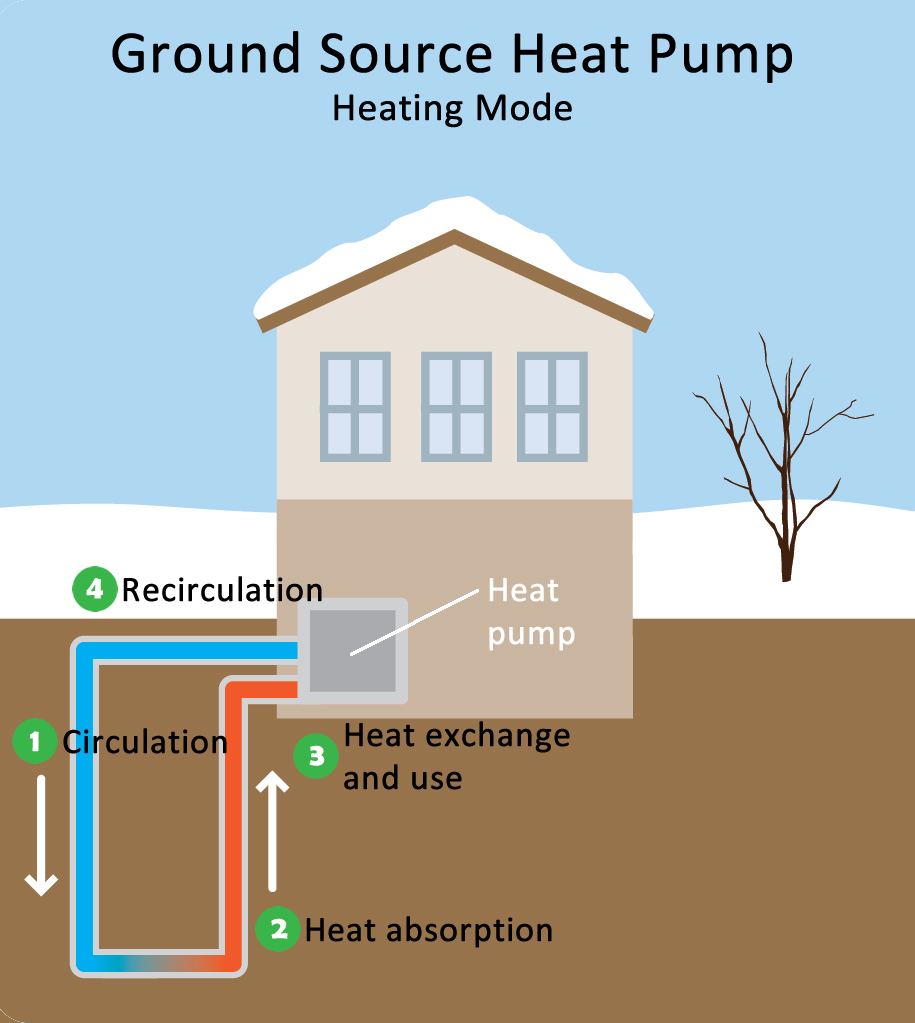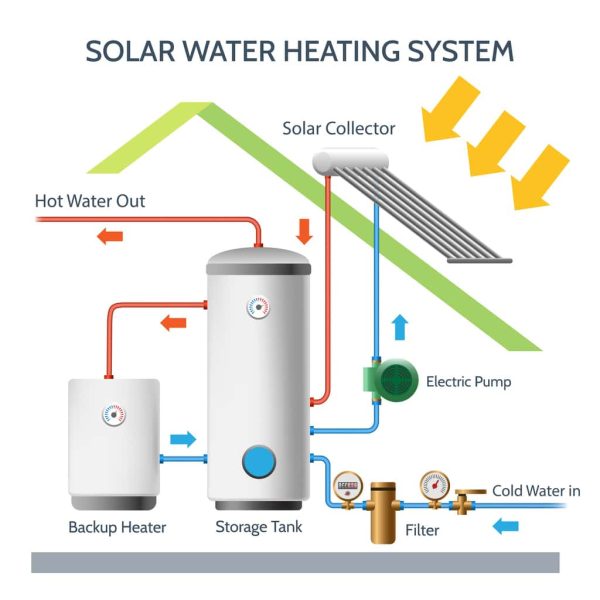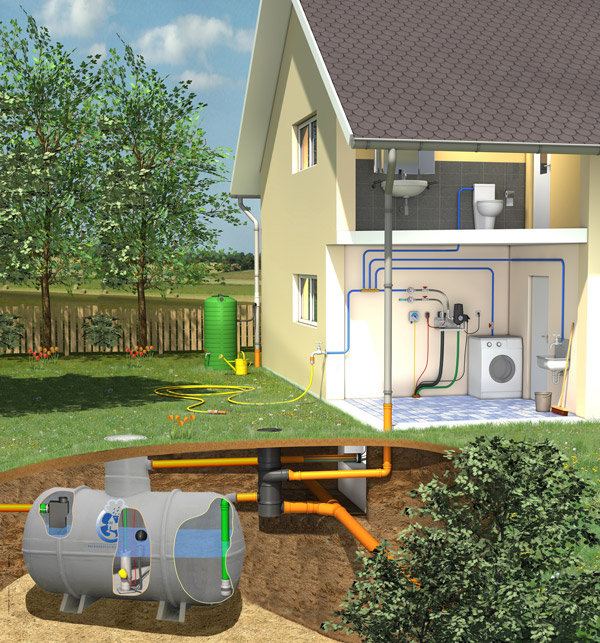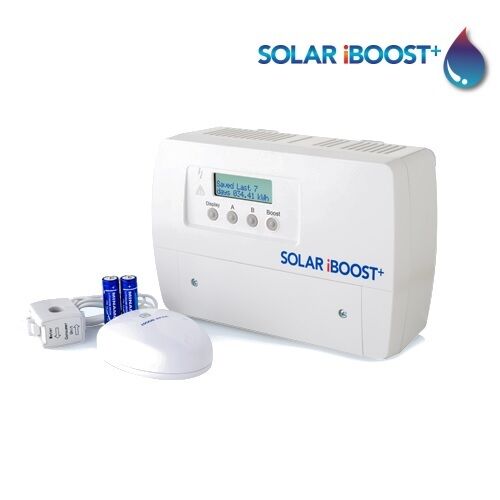Other Renewables
Renewable Energy Systems
DJK Renewables have a range of energy efficient renewable solutions, aside from solar panels. These are designed to generate electricity, or deliver the comfort of heat and hot water to our homes. As well as saving you money, they also minimize the production of harmful greenhouse gases in the process.
Please click the headings below to expand the Services.
 Ground source heating uses a ground source heat pump to extract low-grade heat from the ground, which is then used to heat a home and its hot water. It works by circulating a fluid through pipes buried in the ground to absorb heat, which is then compressed and transferred to a heating system like radiators or underfloor heating.
Ground source heating uses a ground source heat pump to extract low-grade heat from the ground, which is then used to heat a home and its hot water. It works by circulating a fluid through pipes buried in the ground to absorb heat, which is then compressed and transferred to a heating system like radiators or underfloor heating.
This method is an energy-efficient and renewable way to heat a building, as ground temperatures remain relatively stable year-round.
Benefits
Energy efficiency: Ground source heat pumps are very efficient, as they use electricity to move existing heat rather than creating it from scratch.
Lower running costs: They can significantly lower energy bills, especially when replacing an older electric system.
Environmental impact: They are a low-carbon heating solution, which helps reduce a home’s carbon footprint.
Year-round performance: They work consistently in cold temperatures because the ground temperature is more stable than the air temperature.
A solar thermal heating system uses the sun’s heat to warm water for your home, unlike solar PV panels which generate electricity. It works by collecting solar energy with panels on your roof, which heats a fluid. This fluid then transfers its heat to water stored in a tank, and the heated water is ready for use in taps and showers.
energy with panels on your roof, which heats a fluid. This fluid then transfers its heat to water stored in a tank, and the heated water is ready for use in taps and showers.
It’s also great for Swimming pools, outbuildings, garden offices.
How it works
Collection: Panels on your roof, which may use a special fluid like a water/antifreeze mix, absorb the sun’s heat.
Circulation: A pump sends the heated fluid from the panels to a hot water cylinder inside your home.
Heat exchange: The hot fluid passes through a coil inside the cylinder, transferring its heat to the water stored in the tank.
Storage: The now-heated water is stored in a highly insulated cylinder, ready to be used for taps and showers.
Backup: A boiler or immersion heater can be used as a backup to heat the water further on cloudy days or when demand is high.
Key benefits
Heats water directly: It provides hot water for your home, which can reduce reliance on your boiler or heat pump.
Saves money: By using free solar energy, it can help lower your energy bills.
Reduces carbon footprint: It is a renewable energy source that can help you be more environmentally friendly.
Works even in cloudy weather: Some systems use panels with special coatings that can absorb energy even on cloudy days, though output will be less than in direct sunlight.
Outside air, even on cold days, contains latent heat which can be converted to provide environmentally friendly, low cost heating for both domestic and commercial properties. Air to air heat pumps operate on a similar principle to an ordinary refrigerator. The air to air heat pump’s outdoor unit draws in and warms the outside air by an indoor fan unit and distributes the warm air throughout the property. It is an extremely efficient process which can produce up to 5 times more heat than the electrical energy it uses.
In addition, air to air heat pumps can also operate as an air cooler during warmer months and advanced air purification technology is particularly beneficial to allergy sufferers. Air to air heat pumps are an attractive alternative where external space is limited as they require nothing more than a suitable outside wall, making them ideal for a wide range of property types, including apartments and smaller homes. The indoor unit is designed for quiet operation and the system is operated using a remote control with an easy to read LCD display.
Air to water heat pumps also operate on a similar principle to an ordinary refrigerator. Heat from the atmosphere is extracted by an outdoor unit and is absorbed by a refrigerant solution which is then compressed to a high temperature. The heat generated is used by the indoor unit to create hot water for a traditional pressurised heating and hot water system.
Air to water heat pumps can provide an outgoing flow temperature of 65°C. However, they are ideally suited for low-temperature underfloor central heating systems and appropriately sized radiators, as well as for baths and showers, providing a low cost solution throughout the year.
The efficiency of all heat pumps is measured as Coefficient of Performance (CoP). This is the amount of energy the heat pump produces compared to the amount of electricity needed to run the pump. For example, a heat pump which uses 1kW of electricity to produce 4kW of usable energy has a CoP of 4 and is therefore 400% efficient.
Bio mass is biological carbon based material derived from living, or recently living organisms such as plants and trees. But biomass can equally apply to both animal and vegetable derived material.
The difference between biomass and fossil fuels is one of time scale. Biomass takes carbon out of the atmosphere while it is growing, and returns it as it is burned. If it is managed on a sustainable basis, biomass is harvested as part of a constantly replenished crop. This maintains a closed carbon cycle with no net increase in atmospheric CO2 levels.
Biomass boilers offer an environmentally sound, heating solution. Burning biomass, such as pellets or logs, emits the same amount of carbon dioxide as is absorbed while the plants were growing. The boilers efficiently extract energy to provide both heating and hot water.
Savings in CO2 emissions are significant – up to 9.5 tonnes per year when a wood boiler replaces a solid (coal) fired system or electric storage heating.
Generate electricity at home with small-scale wind turbines. 40% of all the wind energy in Europe blows over the UK, making it an ideal country for small domestic turbines. Wind turbines harness the power of the wind and use it to generate electricity.
Small systems known as “microwind” or “small-wind” turbines can produce electricity to help power the lights and electrical appliances in a typical home.
The Energy Saving Trust has recently completed the most comprehensive field trial of domestic scale wind turbines to date. The aim of the trials was to provide UK home owners with an indication of whether they would be able to generate electricity from the wind at their home. The data from these trials has been used as the basis for the Domestic Wind Speed Prediction tool.
You can access this tool by clicking here.
In addition to saving the environment, there are further benefits to switching to low energy LED and compact fluorescent lighting:
- REDUCE energy bills – Up to 94% off running costs
- REDUCE maintenance costs – LED Lights last +50,000 hours
- REDUCE air-conditioning costs – LED Lights emit very little heat
- REDUCE fire risk – LED Lights run at low temperature
DJK Renewables offer energy saving solutions that include evolving technology such as LED for interior down light replacement. LED lighting can also be used for exterior illumination to complete the perfect garden without the worry of running costs when hosting that important garden party or family BBQ.
For commercial applications, DJK provide energy saving control systems, energy saving light fittings such as compact fluorescent high frequency lighting and direct / indirect luminaries.
Looking for bright ideas to get power into hard to reach or remote buildings and locations?
With increased public awareness of renewable energy products, DJK as MCS (Micro Certification Scheme) approved installers offer the design and installation of ‘Off Grid’ Solar PV systems for both domestic and commercial applications.
- No grid power connection required
- Light to remote buildings and locations (sheds, garages, stables, toilet blocks, log stores etc.)
- No electricity bills
- No servicing required, fit and forget
Store Electrical Charge
Off Grid Remote Lighting
 The RainSava system offers the perfect solution for preserving and utilising a natural resource: rainwater. This harvesting and collection system offers a sustainable, eco-friendly alternative to public water supply for non-potable household use.
The RainSava system offers the perfect solution for preserving and utilising a natural resource: rainwater. This harvesting and collection system offers a sustainable, eco-friendly alternative to public water supply for non-potable household use.
Harvesting rainwater has significantly increased in popularity in recent years, with the growing recognition that water is a precious commodity. Rainwater offers a sustainable environmental alternative to mains water for all non-potable uses. Collection of rainwater can also reduce surface water around the home and may offer a storm water management solution.
Nature delivers an abundant supply of soft rainwater directly to your property. The roof, gutters and downpipes all act as an inbuilt collection system. RainSava then filters out leaves and debris from this natural resource and stores it in an underground tank. This water can then be pumped into the home for use in non-potable applications. Washing machines, toilet-flushing, watering the garden and washing the car.
- Sustainable solution for water use
- Save up to 50% on mains water usage and consequent reduction of water bills
- Ensures low visual impact on your property
- Low power requirements
 It’s Clever but Simple!
It’s Clever but Simple!
Solar iBoost utilises the power generated from your solar PV array during the day to heat your hot water using your own immersion heater. In preference to exporting the power to the grid.
Thereby, no expensive grid power is used to power the immersion heater. The savings in lower gas/oil fuel bills will be far greater than the export rate if metered. Typical payback is achieved in less than 4 years and the system will not affect your Feed-In tariff payments.
Clever software ensures that energy diverted to heat your hot water is adjusted automatically to the amount of electricity generated from your PV array. A consistent minimum level of PV output is required before switch on. PV power to the immersion heater is limited to ensure no grid power is consumed unnecessarily. Your hot water will be heated in about 8 hours and a manual override, is provided for manual control.
[add 1 image]Solar iBoost Control








